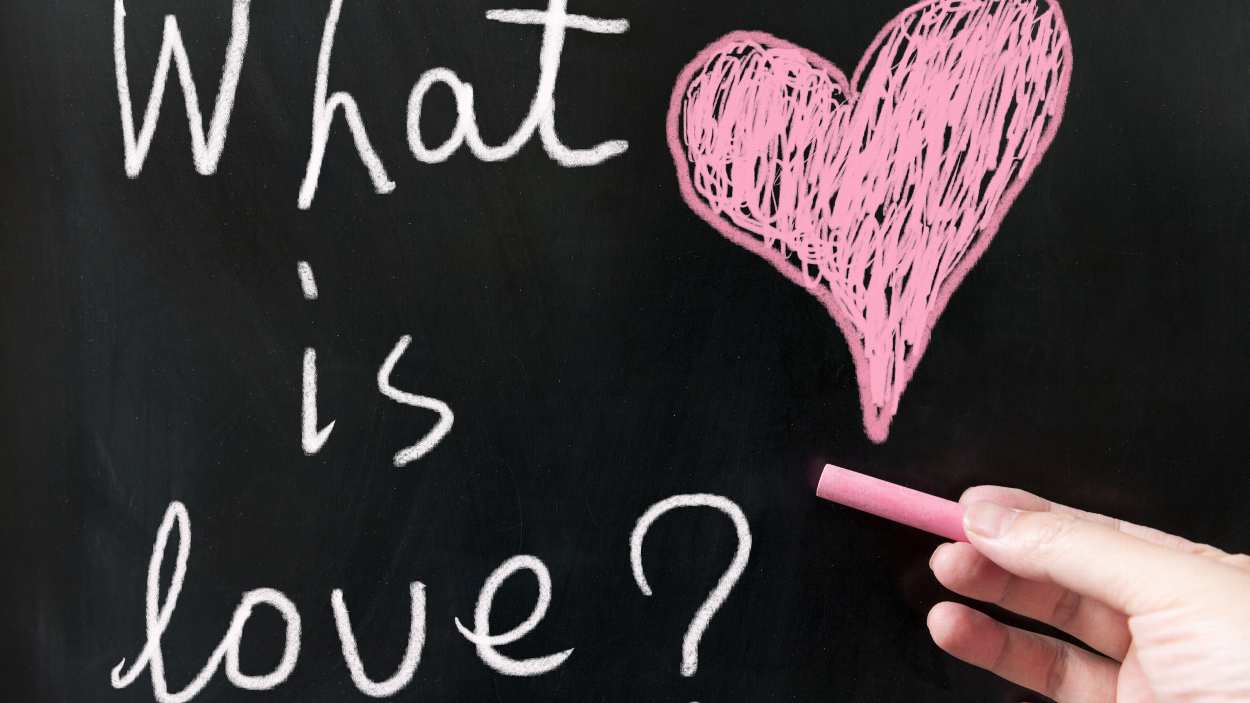What is Love?
Love - we're so used to hearing it talked about in day to day life that we often forget what it actually looks like, or even what it is.
Love is talked about as being a ‘ set of emotions and behaviours characterised by intimacy, passion, and commitment. It involves care, closeness, protectiveness, attraction, affection, and trust.'
Despite being considered one of the most important emotions in the human experience, love is still not particularly well understood, with researchers not able to even conclude whether it is purely driven by hormones, or more of a cultural phenomenon.
Within relationships, most of us would argue that love is essential, what about neediness and co-dependency? While some small element of neediness is understandable - for example the need for your partner to express their affection and care for you, however it is important to note that every individual and every relationship will have different tolerances for what is considered needy. What is fine for one person may be unbearable for another, and this is where communication with your partner is key.
Recognising our attachment style can be helpful in understanding our relationships - for example someone with an anxious attachment style may desire a higher level of support and responsiveness from their partner, whereas someone with a fearful-avoidant attachment style may lean the other way and have trouble leaning on or depending on their partner.

Love: Beyond Romance
It will come as no surprise to hear that love is a complicated thing. The love we have for our romantic partner is different to the love we have for our children, parents, friends, or even ourselves. These relationships are wildly different, and yet described with the same word. Looking at it in a deeper way - love is more accurately described as the collective term for a group of emotions that we feel towards something. Love for our children encompasses a protective instinct, a desire to nurture them, warmth, joy. Love for our romantic partner might encompass sexual desire, happiness, jealousy and security. Two very different sets of emotions, described with the same word.
Humans have an innate desire for love and connection - we only have to look back to the pandemic to see that without human interaction, many of us start to struggle in a short time frame.
However, there is a difference between needing the connection with your partner, and being excessively needy. As previously mentioned, there will be a different tolerance for each person and relationship as to what is considered ‘too needy' - some aspect of it could be considered a good thing, reminding your partner that you desire them and want to be around them. But too much can lead to co-dependency, losing personal identity and the other partner feeling smothered - none of which are good things.
For example, it may be that you like to check in with your partner via text - a quick ‘good morning' or ‘hope your day is going ok' is fine, but it is likely to start causing a problem if you're messaging multiple times in a row without them having, or wanting, the chance to respond. Social media can also cause problems if you struggle with being needy, the temptation to ‘stalk' the people that your partner talks to online, follows or interacts with can be overwhelming - and can often lead to jumping to conclusions or causing issues where there are none.

Being cared for vs being rescued
In every relationship it is understandable to anticipate a level of care to be shown - you should want to do nice things for your partner (and have them reciprocate), you want to support your partner, invest in them and shield them from harm. All of these are understandable traits in a relationship, but if it becomes a pattern that you tend to opt for partners who are needy, it makes you feel like you have value if someone needs you or you find yourself repeatedly pushing your own needs to one side in order to cater to theirs then it could be a sign that you're the ‘rescuer' in the relationship.
Relationships should have balance - there should be times when each partner can lean on the other and know that their partner is there to support them, rather than the support only ever being one sided. Being cared for is important, however ensuring that there is balance is key to avoiding the ‘rescuer/victim' dynamic.

Attachment
There are 4 main attachment styles, 2 of which have already been mentioned. These fall into the following categories:
- Secure - warm, social and easy to connect with. Aware of and able to express their feelings, tend to build meaningful, long lasting relationships.
- Anxious - low self esteem, fear of abandonment and clingy in relationships
- Avoidant - tend to appear confident and self sufficient, do not tolerate expressing feelings and tend to struggle to build healthy relationships.
- Disorganised - inconsistent in their behaviours, have a hard time trusting other people, tend to avoid strong emotional attachments due to a fear of getting hurt.
As you can probably already see from a brief outline, the different attachment styles will have an effect on the way you connect with others and act in your relationships. Very few of us will fall firmly into a single category - and it is entirely normal to see aspects from each in yourself and/or your partner, and it is also important to remember that as we move through life, our attachment styles may change due to life experiences.
If you're concerned about a pattern you have noticed in your relationships, then a counsellor could help you to understand and make any changes. Working with you , or with your partner as a couple, a counsellor can help you to understand your behaviour as well as your emotional responses.
For more information on how counselling might be able to help you, get in contact with me on 07305 920 437.
